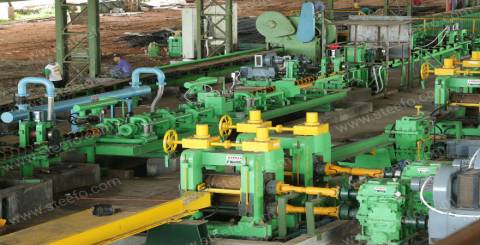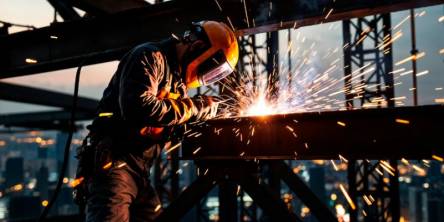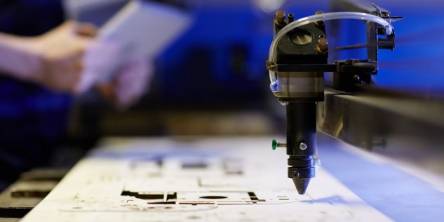In Pursuit of Basics of Rolling Mills and Their Importance in Business

Although rolling mills have very simple construction, still they are a “must-have” tool in the metalworking workshop. Rolling mills are machines with two rolls that are used to deform the metal and then reshape it. Rolling mills are used to adjust the thickness and length of the material as per need. In this process, both the rollers move in opposite directions that result in a better grip of the material and better accomplishment of the task. Rolling mills are designed to achieve the desired finished good but this also depends upon the rolling mill manufacturer. The quality of the rolling mill is defined by its behavior under load or utmost pressure and this makes the manufacturers stand out.
Rolling is a multi-stage process where the desired thickness, length and width are achieved after several rolling processes. The thickness of the material is always greater than the area between the rollers. The number of rollers depends upon the ratio between the material thickness and the desired thickness. So, first study the thickness of rolling stock i.e. material and finished-goods before starting the process. Rolling mills have different types that are categorized on the basis of shape and dimensions like slab, bloom, billet etc. These are intermediate goods that are further processed to make finished products. For example, billets are processed into pipes, tubes, wires, and slabs are used to form sheets.
Now, let us discuss their importance in business:
Need For Processing:
Metal is used in almost every business in one or the other form and rolling mill is the equipment that is used to design its shape. Machines make reshaping of metal way easier than manual processes. So, they are a must-to-have tool if your business is metal related in any way.
Consistency and Good Finish:
Only through rolling mills, you can achieve constant cross-section throughout the long material length. It is important to maintain the surface consistency and rollers prove to be the perfect tool for it.
Better Dimensional Accuracy:
All you need is to make the setup as per the dimensions needed and every time you will get a product with same dimensions. Rolling mills reduce the chance of making mistakes and deliver quality products.
Easy-to-Handle:
Working with complex machines demands skilled labour which ultimately increases work cost. Rolling mills are simple with their looks and equally simple to work on. They do not require highly skilled labour as all they need is trained workforce.
Higher and Fast Productivity:
The very common reason behind minimal manual labour is the rise in demand for machines. The motive behind this is the better productivity. Same applies to rolling mills; they do not only offer a better product but higher productivity too. Completing orders on or before time adds on to the credibility of the company. This helps in making goodwill and results in fast expansion of the business.
Lower operating costs:
Rolling mills save tons of energy that costs huge if seen with industrial perspective. They suit both small-scale and big-scale companies as they come with two operating options i.e. Hand-powered rolling mills and Electric rolling mills. Hand-powered rolling mills are cost-effective and best for small-scale manufacturers. Electric rolling mills save power that reduces ultimate cost.
These were some of the basic benefits of having a rolling mill in the workplace. We discussed ways to benefit business on productivity as well as costing grounds but we didn’t talk about the quality of rolling mill. The quality of rolling mill is also important because low standard equipment eventually doubles the investment in their repairing services. So, precisely choose the manufacturers to avoid any inconvenience in future.
Similar Articles
When you see a steel ship in the harbor, the first impression is usually sheer scale.
Explore CNC turning—its components, process, benefits, applications, and future trends shaping modern precision manufacturing in various industries.
In the competitive industry of car manufacturing, attaining exceptional performance along with an innovative design needs the incorporation of modern manufacturing technologies
Facing delays, quality issues, or supply chain problems in hardware manufacturing? Learn the top 7 challenges—and practical fixes—to streamline production.
In the rapidly advancing landscape of high-tech manufacturing, electronics, and materials science, diamonds are no longer just gemstones they’re high-performance materials redefining what’s possible in technology.
A business in the manufacturing industry today has to ensure that it chooses the precision-engineered components suppliers keenly since the competition is very stiff
Selective Laser Sintering, or SLS, has established itself as one of the most reliable and widely used 3D printing technologies. This method is valued for its ability to produce complex, durable, and high-quality parts without the constraints of traditional manufacturing.
In the retail and display industry, the visual appeal of products is paramount. Customers are constantly drawn to displays that are not only eye-catching but also provide an immersive experience.
As previously established, CO2 laser technology operates by shining a high-power infrared beam on a mixture of gas that contains carbon dioxide, nitrogen, and helium. This technology is well known for the fact that it is able to engrave onto a variety of materials such as wood, glass, plastic, leather, and even some metals with high precision and without contact.









